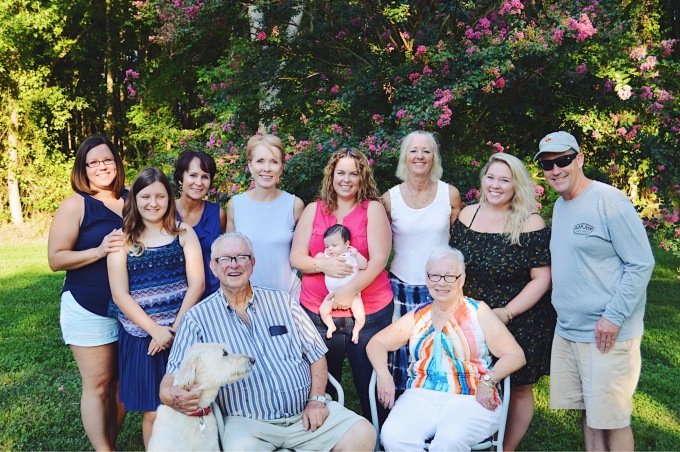

The interview with prior restaurant owner Sally Scheible was special for several reasons. For one, Scheible’s restaurant was undoubtedly an example of Southern Maryland food culture, from its locally-sources seafood to its boisterous clientele. Secondly, Sally has maintained an intimate and unique relationship with my family for generations—in fact, my mother was one of her first employees. While I had initially asked to interview just Sally, I arrived at our meeting to find a household full of people talking, laughing, and communally gathered around a table sharing a meal of fried chicken. As it turns out, once I had asked Sally for the interview, many other previous restaurant employees also wanted to participate. While the restaurant has been closed since the early 2000’s, the community Scheible’s created has continued to endure. Thus, my one-on-one interview evolved into a focus group.

The history of the restaurant began when Sally left a government job in Washington, DC in the 1970’s to return to Southern Maryland and assist her husband’s fishing and charter boat business. Starting by serving eggs and coffee to the morning fisherman, Sally had no formal culinary training. If customers complained about the taste of her food, she would aptly reply:
“If you don’t like eggs over easy, don’t eat it!”
As the business grew, Scheible’s found itself hiring a multitude of Southern Maryland natives—many of whom attended the focus group—and attracting a large clientele that often traveled hours from the city center to the humble waterfront restaurant for fresh sea food. I myself spent a special part of my childhood watching in awe as the boats hauled in their catches to the docks, smelling strongly of brine. Some of the local attractions included: homemade hush puppies, crab cakes, beer-battered fish, and stuffed ham—a holiday dish that is exclusive to Southern Maryland.
As fishing regulations during the 70’s and 80’s were virtually nonexistent, the restaurant began purchasing from private fishermen who partook in the novelty of fishing as a sport rather than commercial business. Since it was cheaper than purchasing from commercial fishermen, Sally established an informal network of local producers that made seafood more accessible for consumers. In essence, these earlier days of the business unintentionally fostered sustainable notions of production; however, it was done not for any social purpose but rather for cost-effective purposes. Before large agricultural production reached Southern Maryland, food was bought locally because it was cheap and accessible to low-income families. Increased prices and regulation on local producers gradually drove consumers away from locally-sourced foods in favor of mass-produced foods, which became cheaper in higher volumes and simultaneously constricted small-scale sellers. However, Scheible’s was not a place remembered exclusively because of its reasonable prices. For many, it signified home and community. For Sally, food is the catalyst for creating meaningful experiences and the restaurant was a place where both workers and patrons came to have a good time.
What was most remarkable about talking with Sally was not necessarily hearing about the successes and difficulties of Scheible’s restaurant, but was rather witnessing the exchanges between herself and her previous employees. It was apparent through their interactions that the restaurant transcended a mere place of work. Instead, it was a place where many people were afforded chances they would not have received otherwise, and cultivated a familial relationship through the restaurant. As we continued our shared meal around the table, it became clear that food was not only a medium for shared experience but also serves as a means to cultivate multi-generational connections. When thinking of restaurants, many fixate exclusively on the ritualistic experiences of the meal, but few consider the symbolic associations a restaurant has as a social space of fostering community. Sally herself summed this up as she looked warmly around and concluded:
“They’re my family, they’ll always be my family.”
